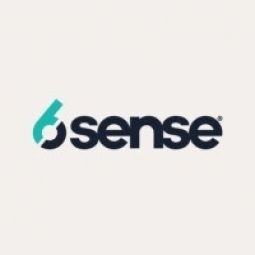技术
- 功能应用 - 企业资源规划系统 (ERP)
适用行业
- 医疗保健和医院
- 药品
适用功能
- 产品研发
- 销售与市场营销
用例
- 需求计划与预测
关于客户
Florence Healthcare 是一家领先的临床试验软件提供商,为 45 个国家/地区的 10,000 多个研究中心提供服务。他们的软件简化了医学研究人员临床试验监管要求的管理。 Florence Healthcare 的软件在加速全球临床试验(包括辉瑞的 COVID-19 mRNA 疫苗)的文档流程、跟踪记录和整合数据方面发挥了重要作用。在与辉瑞公司签订合同之前,该公司主要与中型生物医学和制药研究公司合作。这一成功激发了他们扩大客户群以纳入更多大型制药客户的愿望,从而促成了他们与 6sense 的合作。
挑战
Florence Healthcare 是一家为 45 个国家/地区 10,000 多个研究机构提供临床试验软件的提供商,在扩大客户群方面面临着重大挑战。在与辉瑞成功合作开展 COVID-19 mRNA 疫苗试验后,Florence Healthcare 旨在赢得更多大型制药客户。然而,他们之前的营销方法(程序化营销总监 Jenny Bunn 形容为“喷雾和祈祷”)不足以像辉瑞那样抓住机会。这种方法涉及通过希望相关的广告来建立品牌知名度,推动客户获得希望有用的内容,并吸引他们进行富有成效的对话。虽然这一策略成功地赢得了中小型客户,但需要采取更复杂的方法来吸引更大的制药公司。
解决方案
为了应对这一挑战,Florence Healthcare 于 2021 年与 6sense 合作。6sense 数据使 Florence 能够识别哪些客户正在购买新解决方案,通过高度集中的营销信息瞄准特定受众,捕获客户参与度,并加强和优先考虑外展活动,以产生可预测的结果收入。最初,Bunn 将 6sense 见解与广告活动结合起来,以改善受众和消息定位。她还使用 6sense 根据“理想客户档案”标准构建了针对中端市场客户的综合营销活动,从而实现了 2.5 倍的渠道增长。此外,业务开发团队利用 6sense 数据启动了外拨策略,使他们能够在不进行推销的情况下进行外展。最后,Bunn 与战略客户团队合作,精心策划了一场旨在吸引潜在客户参加网络研讨会的消息传递活动,使用 6sense 数据来识别和邀请潜在客户。
运营影响
数量效益

Case Study missing?
Start adding your own!
Register with your work email and create a new case study profile for your business.
相关案例.

Case Study
Case Study: Pfizer
Pfizer’s high-performance computing software and systems for worldwide research and development support large-scale data analysis, research projects, clinical analytics, and modeling. Pfizer’s computing services are used across the spectrum of research and development efforts, from the deep biological understanding of disease to the design of safe, efficacious therapeutic agents.

Case Study
Hospital Inventory Management
The hospital supply chain team is responsible for ensuring that the right medical supplies are readily available to clinicians when and where needed, and to do so in the most efficient manner possible. However, many of the systems and processes in use at the cancer center for supply chain management were not best suited to support these goals. Barcoding technology, a commonly used method for inventory management of medical supplies, is labor intensive, time consuming, does not provide real-time visibility into inventory levels and can be prone to error. Consequently, the lack of accurate and real-time visibility into inventory levels across multiple supply rooms in multiple hospital facilities creates additional inefficiency in the system causing over-ordering, hoarding, and wasted supplies. Other sources of waste and cost were also identified as candidates for improvement. Existing systems and processes did not provide adequate security for high-cost inventory within the hospital, which was another driver of cost. A lack of visibility into expiration dates for supplies resulted in supplies being wasted due to past expiry dates. Storage of supplies was also a key consideration given the location of the cancer center’s facilities in a dense urban setting, where space is always at a premium. In order to address the challenges outlined above, the hospital sought a solution that would provide real-time inventory information with high levels of accuracy, reduce the level of manual effort required and enable data driven decision making to ensure that the right supplies were readily available to clinicians in the right location at the right time.

Case Study
Gas Pipeline Monitoring System for Hospitals
This system integrator focuses on providing centralized gas pipeline monitoring systems for hospitals. The service they provide makes it possible for hospitals to reduce both maintenance and labor costs. Since hospitals may not have an existing network suitable for this type of system, GPRS communication provides an easy and ready-to-use solution for remote, distributed monitoring systems System Requirements - GPRS communication - Seamless connection with SCADA software - Simple, front-end control capability - Expandable I/O channels - Combine AI, DI, and DO channels

Case Study
Driving Digital Transformations for Vitro Diagnostic Medical Devices
Diagnostic devices play a vital role in helping to improve healthcare delivery. In fact, an estimated 60 percent of the world’s medical decisions are made with support from in vitrodiagnostics (IVD) solutions, such as those provided by Roche Diagnostics, an industry leader. As the demand for medical diagnostic services grows rapidly in hospitals and clinics across China, so does the market for IVD solutions. In addition, the typically high cost of these diagnostic devices means that comprehensive post-sales services are needed. Wanteed to improve three portions of thr IVD:1. Remotely monitor and manage IVD devices as fixed assets.2. Optimizing device availability with predictive maintenance.3. Recommending the best IVD solution for a customer’s needs.

Case Study
Fusion Middleware Integration on Cloud for Pharma Major
Customer wanted a real-time, seamless, cloud based integration between the existing on premise and cloud based application using SOA technology on Oracle Fusion Middleware Platform, a Contingent Worker Solution to collect, track, manage and report information for on-boarding, maintenance and off-boarding of contingent workers using a streamlined and Integrated business process, and streamlining of integration to the back-end systems and multiple SaaS applications.








